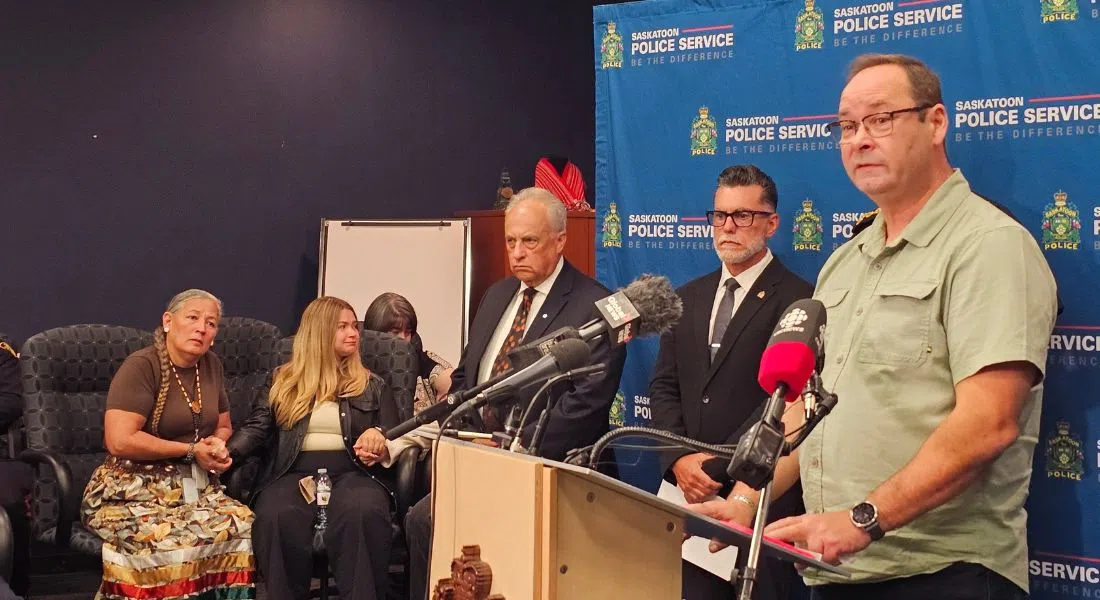After 93 days of searching the Saskatoon landfill and over three-and-a-half years investigating her disappearance, Mackenzie Lee Trottier’s remains have been found. She was 22 when she was reported missing in December of 2020.
The search of the landfill began in May and was only supposed to last until June 3rd, with police and purpose-trained cadaver dogs searching a 930 cubic metre area of the landfill, but at the end of May, police announced the search would continue and the area of the search expanded. Saskatoon Police Chief Cameron McBride says on July 30th, a search team made a partial recovery of human remains, and then on August 1st, a full recovery was made and were positively identified as Mackenzie Trottier. An autopsy was conducted, but Mackenzie’s death remains undetermined. The Saskatchewan Coroners Service is continuing to investigate.
Staff Sergeant Corey Lenius says the suspect lived at a place Mackenzie frequented. He died of an overdose last December. Investigators were able to get his phone data and saw there was a search for garbage pickup times. From there, police talked with the City to find where that truck would have gone in the landfill, which is how they were able to narrow down an area. Lenius estimates the Saskatoon Police Service Public Safety Unit, with over 44 searchers in total, searched through 54 metric tonnes of refuse every day for an overall total of approximately 5,000 tonnes.
Forensic anthropologist, Dr. Ernie Walker, explains that large-scale searches are very complicated and officers climbing through piles of trash doesn’t do much and it’s dangerous. In this case though, they were able to hone in a bit from the information on the suspect’s phone. It was originally to be a month long search, but then that deadline was removed and Dr. Walker says the search area expanded three times.
He explains that it wasn’t just human remains they were looking for. They were also looking for evidence, like pieces of paper with addresses on them, to know they were in the right area. Walker says the secret of their success was that the City tracks its trash carefully. The trucks have GPS so the City knows where they dump, however trash moves around once it’s in the landfill as heavy machinery goes over it. He explains that the City tracks trash because the landfill can only grow so much, so the trash has to go higher,and is compacted, so it can hold the weight of whatever goes above it. You do that, by keeping track of all the logistics.
Mackenzie’s father Paul Trottier, says this has been very difficult, the past 93 days in particular, but he wanted to thank everyone who supported his family including the RCMP, the MMIW community, Metis Nation-Saskatchewan, FSIN, the City of Saskatoon and the Saskatoon Police Service. “Our MMIW family, Victim Services, Dorothea Swiftwolfe, and our friends and family, you have been that fabric that held us together. You are forever etched in our hearts. Today we have our answers. Mackenzie is home and thank you everyone for that.” Swiftwolfe is the Police Service’s Missing Person Liaison. After the news conference at Saskatoon Police Headquarters was over, Paul Trottier stood in front of all of the police officers who were there, all of whom had helped in the search, and quietly thanked them for everything they had done.
During the police investigation, video surveillance had been released of a man believed to have information regarding Mackenzie’s disappearance. This man is not the deceased suspect and is not believed to be involved in Mackenzie’s death.

L to R: Trottier family, Staff Sergeant Corey Lenius, forensic anthropologist Dr. Ernie Walker, Chief Cameron McBride

standing L to R: forensic anthropologist Dr. Ernie Walker, Staff Sergeant Corey Lenius, Mackenzie’s father, Paul Trottier

Paul Walker thanks police officers involved in search for his daughter Mackenzie
















